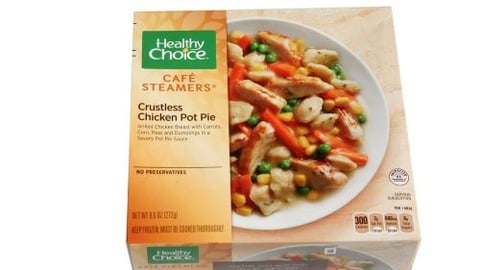TikTok, YouTube Influence Frozen Food Purchases
The National Frozen & Refrigerated Foods Association (NFRA) has unveiled findings from a new study revealing how consumers discover and purchase frozen foods in 2025. Social platforms like TikTok, YouTube and Instagram are now key sources of inspiration for younger shoppers, while traditional in-store promotions remain the most effective tool for influencing purchase decisions across all demographics.
“Today’s consumers are turning to digital platforms for real-life meal inspiration — and frozen foods continue to deliver,” said Kate Landis, NFRA senior director of marketing. “Brands that show up with relatable content online and a strong in-store presence will stay top of mind and cart.”
[RELATED: GLP-1 Users Driving Demand for High-Protein Frozen Foods]
Some key consumer insights from NFRA's study include the following:
Where Shoppers Get Food Information
- 47% rely on in-store displays and signage.
- 40% turn to family and friends.
- Social platforms are gaining ground: YouTube (29%), Facebook (25%), TikTok (21%), Instagram (18%) are all significant sources.
Generational Digital Divide
- 50% of Gen Z use TikTok for food inspiration versus just 5% of Boomers.
- YouTube remains strong across all age groups.
Social Media’s Role in Frozen Food Trial
- 36% of all consumers said that social media influences their frozen food purchases.
- That climbed to 50% for Gen Z and 49% for Millennials.
- The most persuasive content identified by respondents consisted of brand ads (41%), influencer reviews (25%) grocery hauls (25%), and food challenges (24%).
Attitudes Toward Frozen Foods
- 73% said that they can make affordable and tasty meals with frozen foods.
- 69% believe that frozen foods can support healthy eating.
- 52% said that in-store discounts encourage them to try new frozen products.
These favorable attitudes are driving interest in the frozen food aisle. According to the “Future of Frozen Food 2025 Report” from Conagra Brands, 28% of grocery store visits include at least one frozen food item.
“Frozen foods play a critical role in what we call ‘stock-up trips’ to the grocery store,” affirmed Bob Nolan, SVP, demand science at Chicago-based Conagra, during a webinar focused on the report’s findings.
Conagra highlighted surging demand for diverse flavors found in global cuisines, as evidenced by frozen offerings like Indian-style tikka masala and authentic street foods. Per the CPG company’s report, 24% of younger consumers are more likely to purchase globally inspired products. Younger cohorts are also into hot and spicy foods, with 48% of Gen Z consumers more likely to buy spicy frozen meals.
Likewise, Millennial and Gen Z shoppers who grew up snacking are fueling interest in bite-sized frozen foods. Conagra’s report showed that sales of bites and mini portions have reached $2.4 billion, with a 31% spike in year-over-year consumption. What’s more, 84% of those products are now being enjoyed as meals.
Meanwhile, as a result of its own latest findings, NFRA recommends that retailers and brands better connect with today’s frozen food shopper by creating platform-specific content, especially on TikTok, YouTube and Instagram. Companies can partner with real-life influencers who focus on flavor, value and quick meal solutions.
The organization also advises doubling down on in-store promotions, as they’re still the most powerful trial driver across generations.
Additionally, for a unified shopper experience, NFRA recommends bridging digital and physical touchpoints.
“This research gives our industry a clear look at how shoppers are discovering frozen foods — and how we can meet them with the right message, in the right place,” Landis added.
Harrisburg, Pa.-based NFRA is a nonprofit trade association representing all segments of the frozen and refrigerated food industry. NFRA sponsors national promotions ReDiscover Dairy & Frozen (January), March Frozen Food Month, June Dairy Month, and Summer Favorites Ice Cream & Novelties (June/July); and provides consumer information such as food safety guidelines, meal preparation tips, recipes and sweepstakes opportunities through its Easy Home Meals consumer website and social media properties.






